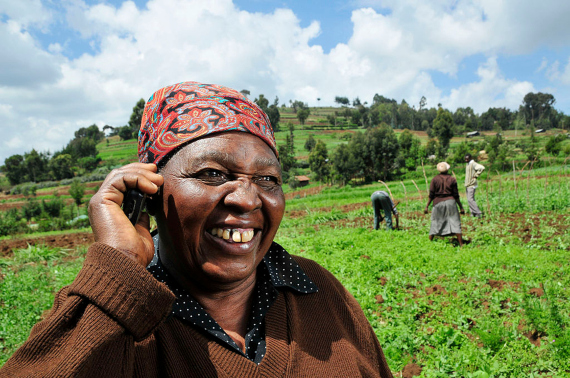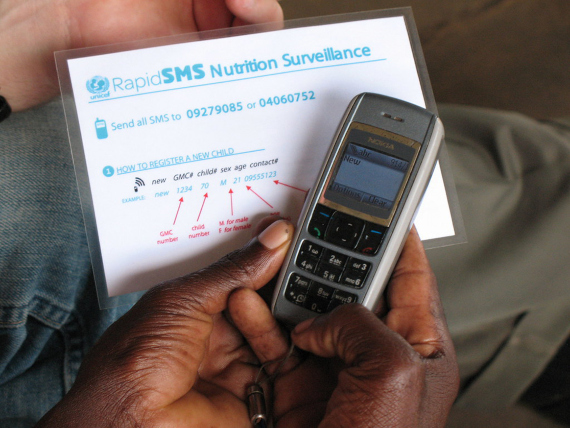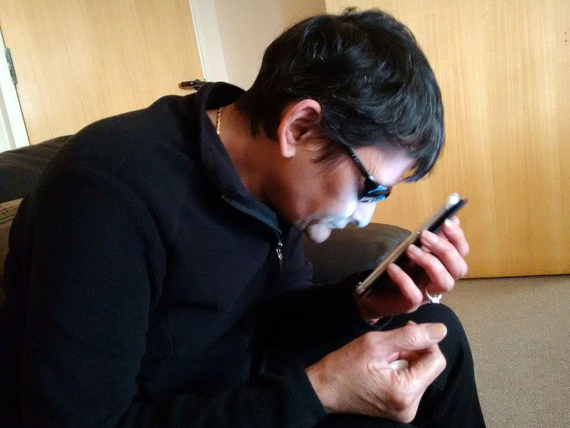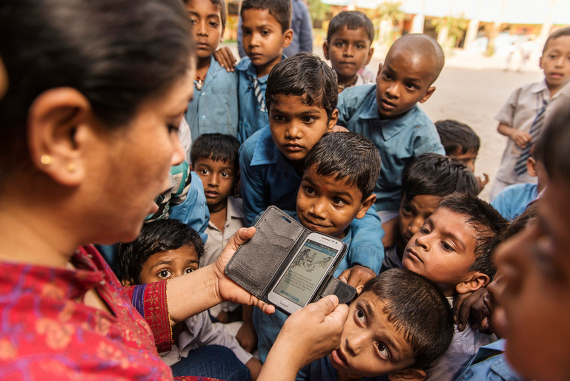For a large portion of humanity, mobile technologies are today an indispensable tool. Although there used to be a time when the use of mobile telephony was associated with a highly developed economy, this ceased to be the case years ago. According to data from the International Telecommunication Union, a part of the United Nations, in 2017 the penetration of mobile line subscriptions reached 98.7% of the population in developing countries. In nations with low or medium-level economies, there are more people with access to mobile devices than to water or electricity, according to the World Bank.
In poorer regions, mobile technologies have become an opportunity to boost economic, health, educational and technological development. As smartphones are still in the minority, these services often use basic technologies such as SMS messaging. Below, we review some examples of how mobile technology can become a powerful weapon against poverty.
iCow
In 2011, Kenyan farmer Su Kahumbu Stephanou created the iCow application to help local shepherds and small farmers track the gestation periods of their cows, making it easier for them to monitor the health of their animals. Most farmers in those regions have access to a mobile phone, even if they are older models without many features, so the system works via SMS.

Over time, iCow has expanded its functionalities to become a platform that offers farmers and herders a plethora of useful information and advice for their farms and herds, as well as connecting them to each other and to services of interest to them, such as veterinary consultations or insemination centres. According to the creators of the award-winning app, iCow users, already numbering in the hundreds of thousands in Kenya, Tanzania and Ethiopia, can increase their productivity and income in as little as three months, improving animal health and crop yields.
RapidSMS
A key aspect of the use of mobile technologies in development aid is to provide tools that enable local users and entrepreneurs themselves to adapt them to their specific needs. This is the purpose of RapidSMS, an open source platform created by UNICEF in 2007 in Python language that was initially designed for data collection and activities aimed at young people, but that has been applied to multiple uses.

RapidSMS allows users to quickly and easily create text messaging and data collection services in user communities, so that information is immediately accessible over the Internet. The award-winning system is used in several African countries for purposes such as birth registration, nutritional monitoring and remote diagnosis. The system’s co-creator, Erica Kochi, recounted in an article how an entrepreneur in Ghana used it to keep abreast of sales of kitchen stoves across the country. RapidSMS is also the base for U-Report, a social network for young people with 6 million users in 53 countries.
M-Pesa
For the inhabitants of developed countries, a mobile phone is a useful complementary tool for our economic transactions; it allows us to operate with our bank accounts, financial products and credit or debit cards. But for those who don’t have access to bank accounts and the like, a mobile phone is often the only tool available.
In 2007, the mobile network operator Safaricom, a subsidiary of Vodafone in Kenya, launched M-Pesa (Mobile Pesa, for “money” in Swahili), a mobile transfer and payment system aimed at people without access to conventional financial services. It allows money to be loaded onto a SIM card and sent to other telephones, as well as converting the balance into cash at an authorised establishment. M-Pesa was created with the goal of reaching shops in the remotest corner of the country, and so it did; today there is practically no village in Kenya that does not have some commerce connected to the system. Transactions are carried out by SMS, which allows it to be accessed with the most basic of telephones.

The success of M-Pesa is such that it has become the principal mobile money service in the world. Today it operates in ten countries in Africa, Asia and Eastern Europe, and continues to expand. In 2016, the system processed some 6 billion transactions through a network of more than 287,400 agents and 29.5 million active users. A study by the Massachusetts Institute of Technology estimated that the service has helped lift 194,000 Kenyan households out of extreme poverty, 2% of the total. In addition, M-Pesa reduces street robberies and petty corruption linked to cash payments.
Diagnostics by smartphone
In addition to the many benefits that mobile phones can bring to their users in developing countries, special mention should be made of systems that enable health professionals to use their smartphones as powerful medical tools in remote regions, where there are no hospitals or sophisticated laboratories. The creation of apps and tools to promote medical care in the developing world through mobile technologies is a very active area today, especially in the field of diagnostics.
One example is the app Peek, created by British ophthalmologist Andrew Bastawrous. Using the screen of a smartphone, the app allows a patient’s vision to be checked, assisting with the early diagnosis of blindness caused by parasitism or other ailments. In other cases, the phone’s camera permits the diagnosis of infectious diseases by image in samples from the patient, even transforming the smartphone into a microscope thanks to special lenses or the digital holographic imaging technique, which achieves micrometric resolution without using lenses.

Other smartphone apps also allow images to be shared with experts to help with diagnosis, and there are even apps currently under development that use facial recognition technology and artificial intelligence to simulate the expert eye of a specialist trained in the identification of parasites by microscopic images.
WorldReader
Education and literacy are ever-present goals in developing countries, and this is also an area that can greatly benefit from the use of mobile technologies. For children, having books to read or all the materials needed to complete an academic year is an unattainable luxury in poorer regions. Today, however, technology is opening up new avenues through the use of low-cost mobile devices, be they telephones, tablets or e-readers.

One example is the more than 30,000 e-readers distributed in 16 African countries by the NGO WorldReader, with the support of the US Agency for International Development (USAID) and other institutions. Also through its app, which users can install on their tablet or mobile phone, WorldReader makes 35,000 titles in 52 languages available to a community of readers that already exceeds 10 million in 49 countries.
Comments on this publication